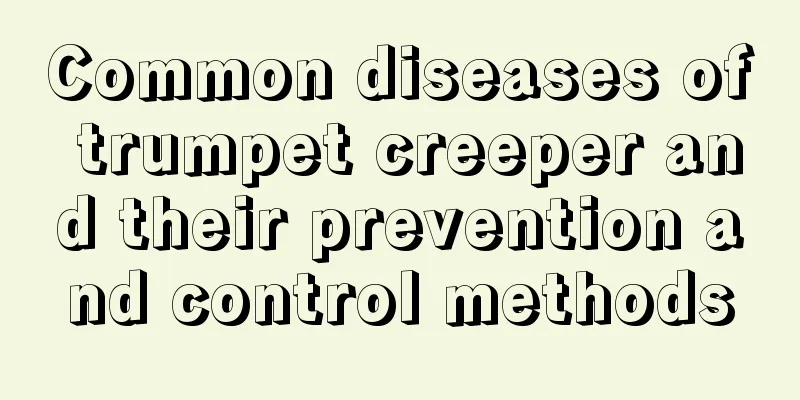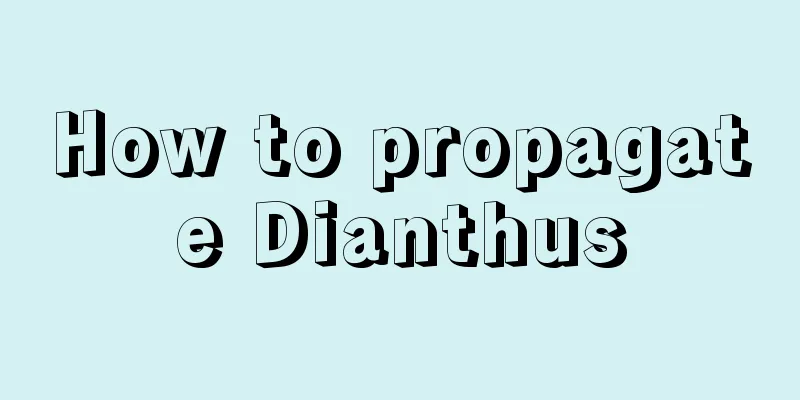Common diseases of trumpet creeper and their prevention and control methods

Botrytis cinereaSymptomsGray mold often occurs in rainy weather, or when too much nitrogen fertilizer is applied and there is insufficient light. When the disease occurs, water-like spots will appear on the affected parts. If not promptly controlled, they will gradually expand, become rotten, and gray mycelium will appear. In severe cases, the plant will die. Prevention and treatment methodsOnce discovered, spray 65% Zineb or Carbendazim in time, once every 7 to 10 days, and spray 3 to 4 times continuously. Pay attention to regular ventilation to ensure normal growth of the plants and improve their disease resistance. After the disease occurs, clean up the diseased leaves and plants in time to reduce the source of infection. Powdery mildew of trumpet creeperSymptomsPowdery mildew mainly harms the stems, leaves and flower buds of plants. After becoming sick, a layer of white powder will appear on the surface. In severe cases, the leaves will gradually wilt, and the flowers will become less and smaller. Prevention and treatment methodsPay attention to ventilation and light transmission at ordinary times, do not place the plants in a stuffy environment, and apply more phosphorus and potassium fertilizers to improve the plant's disease resistance. Spray the pesticide promptly after the disease occurs. Choose 2500 times diluted oxycarboxin or other suitable pesticides. Spray once every 10 days, and spray continuously 2 to 3 times. Trumpet creeper root rotSymptomsThe disease mainly occurs in the hot summer. Please note that it is caused by excessive watering, which leads to root rot, yellowing of branches and leaves, and in severe cases, death of the entire plant. Prevention and treatment methodsAfter the disease occurs, promptly water the soil around the roots with 300 times thiram solution. At the same time, pay attention to timely ventilation, cooling, and appropriate watering to ensure that the potting soil is moist but not waterlogged. |
<<: Disease prevention and control methods of kumquat
>>: Common diseases and pests of Scutellaria barbata and their control
Recommend
Cultivation methods and precautions of Sedum serrata
Ecological habits of Sedum serrata External form ...
10 kinds of flowers that are resistant to flooding and easy to grow
1 Colorful taro The leaves of the colorful taro a...
How to water mint potted plants in spring
How to water mint potted plants in spring In spri...
How to grow Dendrobium
1. Water thoroughly Dendrobium prefers a growing ...
How to prune a small pepper tree
1. Pruning young trees When pruning young trees, ...
How to protect succulent plants from freezing in winter
Water Control These are probably the two words th...
Mango potted planting method
Prepare Before planting mangoes in pots, you need...
How to cultivate Panax notoginseng to make it more vigorous
Panax notoginseng growth conditions Panax notogin...
Can pumpkins be grown in pots?
Can pumpkins be planted in flower pots? Pumpkins ...
Feng Shui Effects of Podocarpus
Feng Shui meaning of Podocarpus The important rea...
Method for rooting fuchsia in hydroponics
1. Choose cuttings First, choose some sturdy bran...
Maintenance tips for cherry potted plants
How to care for cherries Water and fertilizer Whe...
Durian cultivation method
1. Maintenance methods 1. Temperature: Because du...
Cultivation methods and precautions of radish
Morning glory is relatively easy to grow, has str...
How long is the growth cycle of lotus?
Introduction to Lotus Growth Lotus grows in calm,...









